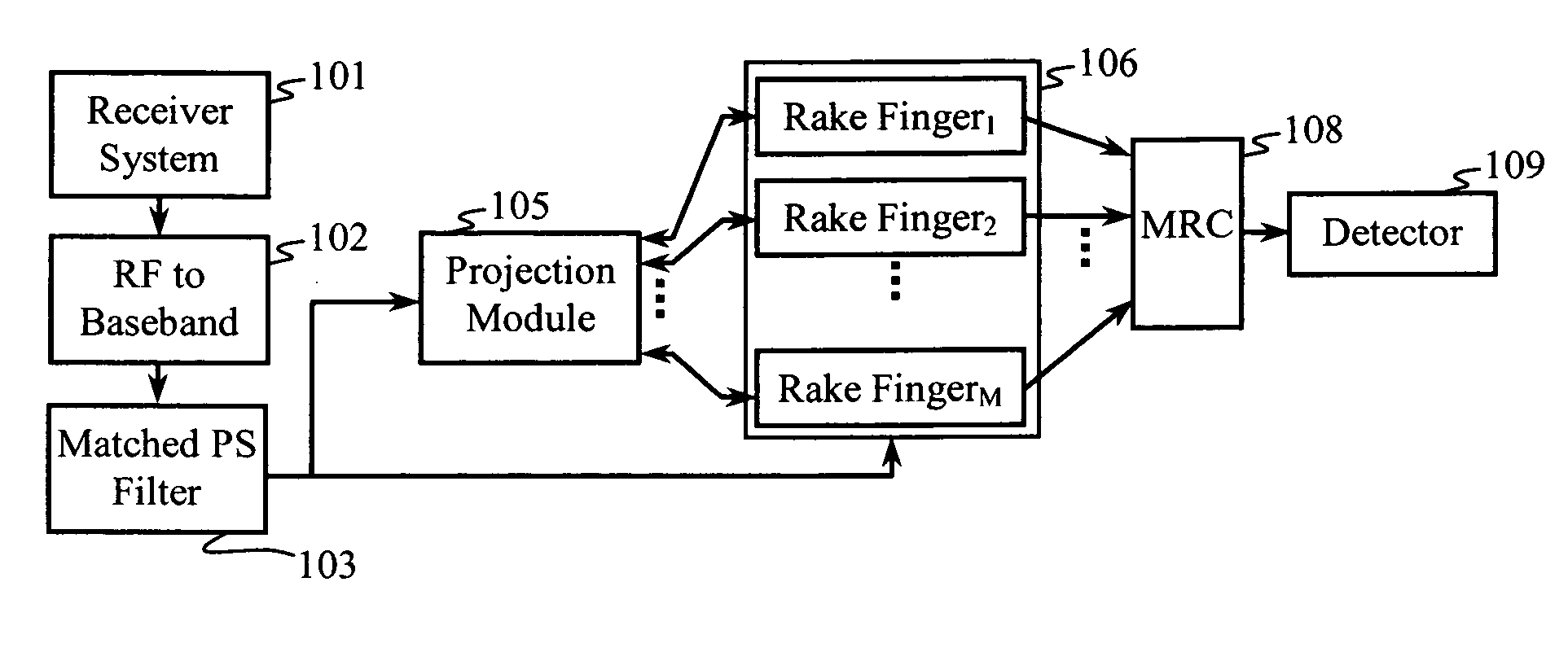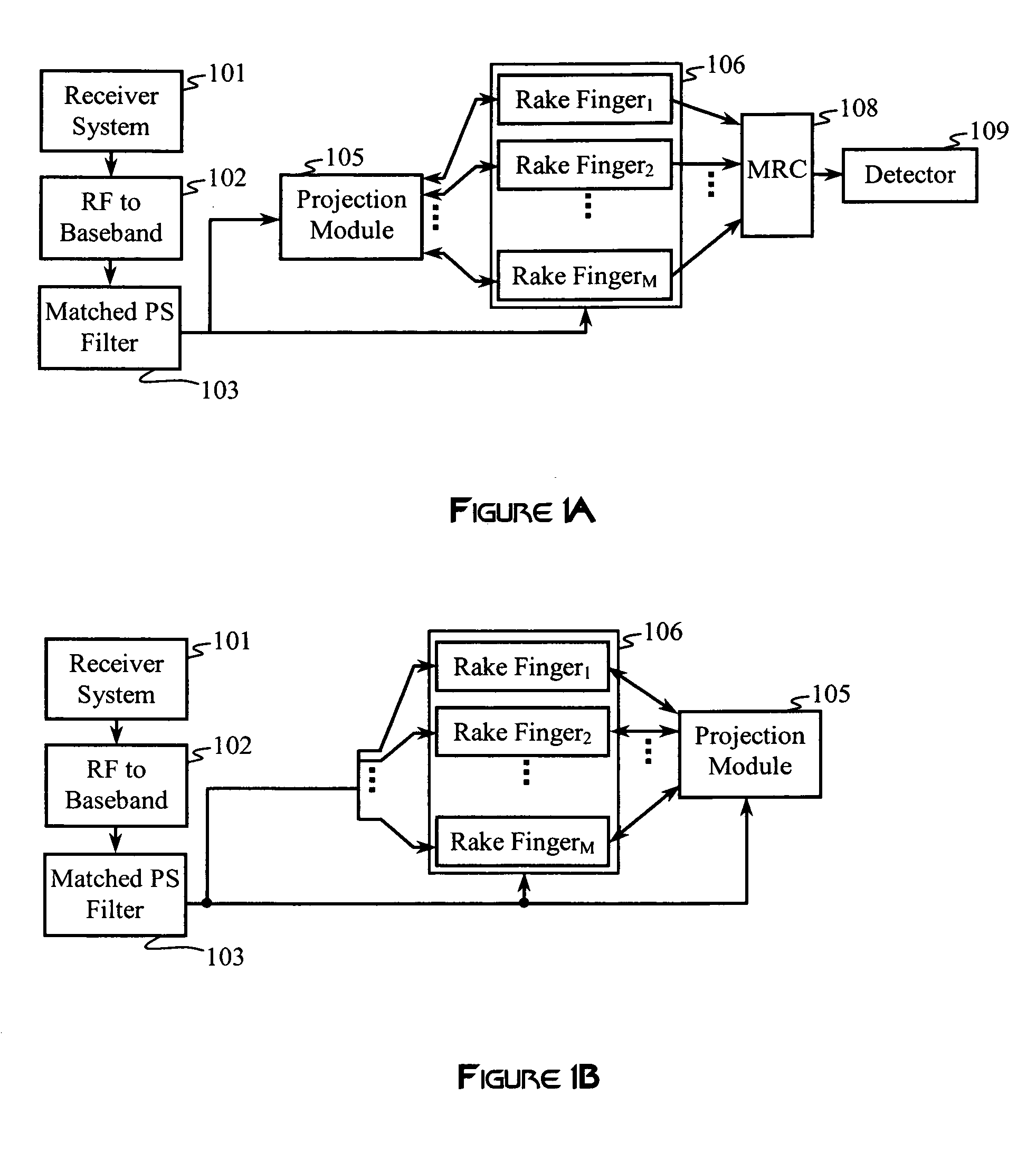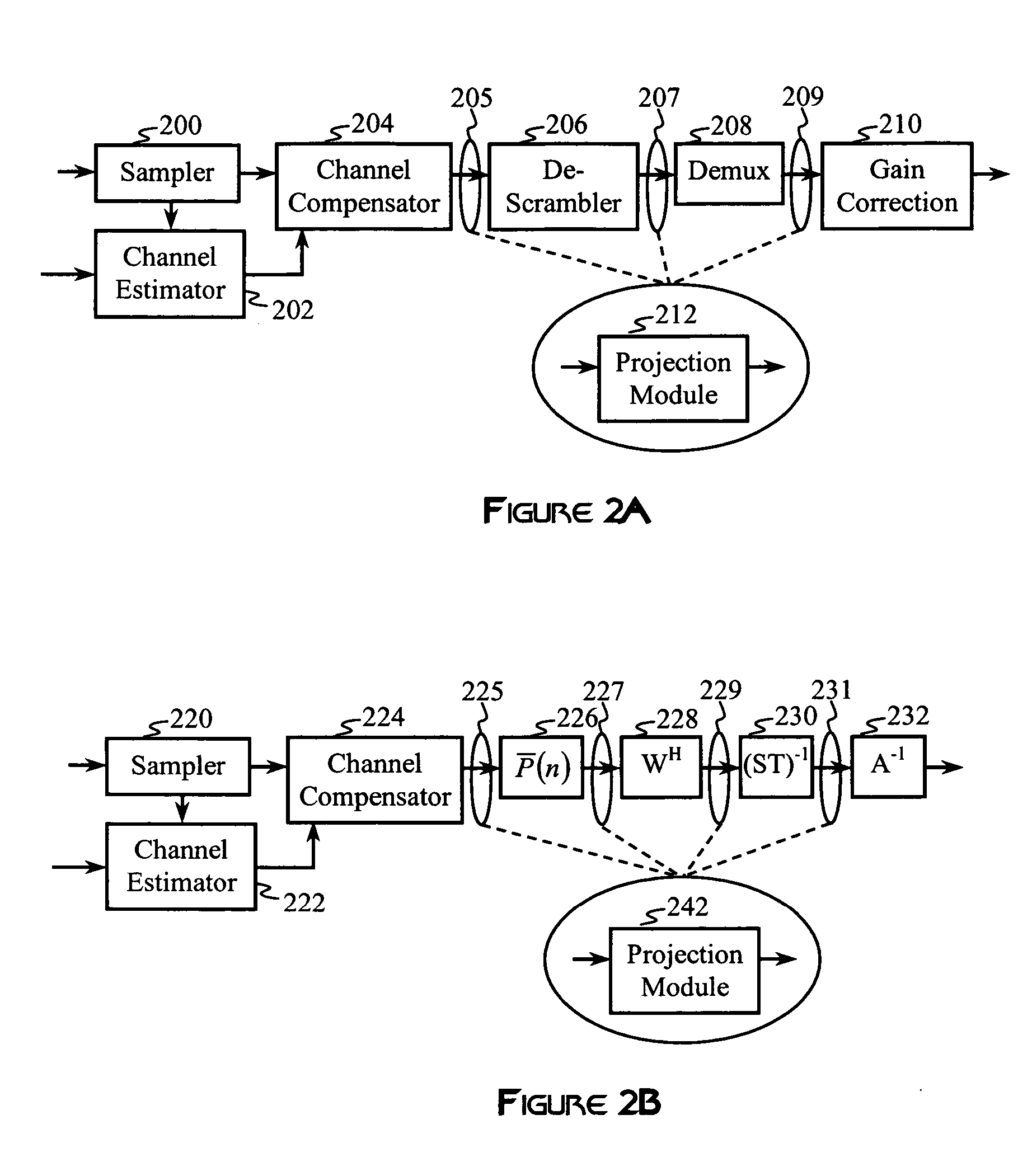Construction of projection operators for interference cancellation
a technology of projection operator and interference cancellation, which is applied in the field of signal processing, can solve the problems of coded signals affecting one another, cdma systems to be interference-limited, and digital filters that only pass or block selected frequency bands of signals to filter out unwanted frequency bands that are not applicabl
- Summary
- Abstract
- Description
- Claims
- Application Information
AI Technical Summary
Benefits of technology
Problems solved by technology
Method used
Image
Examples
Embodiment Construction
[0035] While the invention is susceptible to various modifications and alternative forms, specific embodiments thereof have been shown by way of example in the drawings and are herein described in detail. It should be understood, however, that it is not intended to limit the invention to the particular form disclosed, but rather, the invention is to cover all modifications, equivalents, and alternatives falling within the spirit and scope of the invention as defined by the claims.
[0036] In FIG. 1A, a receiver system 101 is configured to receive at least one transmitted CDMA signal that has propagated through a communication channel. A transmitted signal typically comprises a superposition of data-bearing user (or traffic) subchannels and at least one control channel. Each user subchannel may be scaled by a predetermined gain in relation to that user's subchannel conditions. The user subchannels are individually spread using one of N orthogonal channelization codes. The value of N v...
PUM
 Login to View More
Login to View More Abstract
Description
Claims
Application Information
 Login to View More
Login to View More - R&D
- Intellectual Property
- Life Sciences
- Materials
- Tech Scout
- Unparalleled Data Quality
- Higher Quality Content
- 60% Fewer Hallucinations
Browse by: Latest US Patents, China's latest patents, Technical Efficacy Thesaurus, Application Domain, Technology Topic, Popular Technical Reports.
© 2025 PatSnap. All rights reserved.Legal|Privacy policy|Modern Slavery Act Transparency Statement|Sitemap|About US| Contact US: help@patsnap.com



